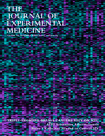JEM:动物模型研究PD疾病蛋白的传播
2012-04-20 Beyond 生物谷
去年,宾夕法尼亚大学医学院研究人员发现,少量错误折叠的脑蛋白,可以进入健康神经元,引起神经退行性病变。在帕金森氏病(PD)和其他神经退行性疾病患者的神经元中,α-突触核蛋白(A-SYN)通常存在于大脑中,形成路易体(Lewy bodies)团块。他们发现a-syn的异常形式,即纤维可以“种子”那样诱导a-syn错误折叠,形成聚集。 其他研究机构进行的早期研究中,当胎儿的神经细胞移植到帕金森氏症患
去年,宾夕法尼亚大学医学院研究人员发现,少量错误折叠的脑蛋白,可以进入健康神经元,引起神经退行性病变。在帕金森氏病(PD)和其他神经退行性疾病患者的神经元中,α-突触核蛋白(A-SYN)通常存在于大脑中,形成路易体(Lewy bodies)团块。他们发现a-syn的异常形式,即纤维可以“种子”那样诱导a-syn错误折叠,形成聚集。
其他研究机构进行的早期研究中,当胎儿的神经细胞移植到帕金森氏症患者大脑中时,移植细胞会发展成路易体。这表明a-syn形式的损坏可能用某种方式将病变的神经元演变成健康的神经元。
现在,神经退行性疾病研究中心和病理学和实验室医学教授Virginia M.-Y Lee博士等人在Journal of Experimental Medicine杂志上发表研究论文,研究人员研究PD小鼠模型脑组织,将 -syn纤维注射到年轻无症状的PD小鼠导致了a-syn病理蔓延。单次注射的三个月后,检测整个老鼠大脑中神经细胞是否含有异常的a-syn团块。接种的小鼠在接种后100至125天之间死亡,其典型寿命为两年。
Lee解释说:我们认为疾病的传播是通过大脑神经网络连接的白质束来完成的,、这项研究为帕金森氏病治疗打开了新的机遇。
接下来的问题之一,一旦进入一个神经元,a-syn蛋白的错误折叠是如何在细胞与细胞之间传播的。
CNDR的博士、副研究员、第一作者Kelvin C. Luk说:这就像一个生化连锁反应。一旦进入神经元范围内,错误折叠的a-syn聚集形成一个存在于细胞中蛋白,使他们最终错误折叠。然后,当a-syn到达神经元之间的突触时,畸形的a-syn侵入其他神经元。
错误折叠蛋白的积累是神经退行性疾病的根本致病过程,但触发a-syn聚集的因素是知之甚少的。宾夕法尼亚团队看到,错误折叠的a-syn沿中枢神经系统途径传播,达到了远远超出了注射部位的大脑区域。
这项研究表明帕金森氏症相关蛋白是如何传播的,在神经元细胞内的扩张并最终释放到邻近的神经元。
NINDS莫里斯光尤德尔中心(NS-053488)和JPB基金会资助这项研究。

doi:10.1084/jem.20112457
PMC:
PMID:
Intracerebral inoculation of pathological -synuclein initiates a rapidly progressive neurodegenerative -synucleinopathy in mice.
K. C. Luk, V. M. Kehm, B. Zhang, P. O'Brien, J. Q. Trojanowski, V. M. Y. Lee.
The accumulation of misfolded proteins is a fundamental pathogenic process in neurodegenerative diseases. However, the factors that trigger aggregation of α-Synuclein (α-Syn), the principal component of the intraneuronal inclusions known as Lewy bodies (LBs), and Lewy neurites (LNs), which characterize Parkinson’s disease (PD) and dementia with LBs (DLB), are poorly understood. We show here that in young asymptomatic α-Syn transgenic (Tg) mice, intracerebral injections of brain homogenates derived from older Tg mice exhibiting α-Syn pathology accelerate both the formation of intracellular LB/LN-like inclusions and the onset of neurological symptoms in recipient animals. Pathological α-Syn propagated along major central nervous system (CNS) pathways to regions far beyond injection sites and reduced survival with a highly reproducible interval from injection to death in inoculated animals. Importantly, inoculation with α-Syn amyloid fibrils assembled from recombinant human α-Syn induced identical consequences. Furthermore, we show for the first time that synthetic α-Syn fibrils are wholly sufficient to initiate PD-like LBs/LNs and to transmit disease in vivo. Thus, our data point to a prion-like cascade in synucleinopathies whereby cell–cell transmission and propagation of misfolded α-Syn underlie the CNS spread of LBs/LNs. These findings open up new avenues for understanding the progression of PD and for developing novel therapeutics.
本网站所有内容来源注明为“梅斯医学”或“MedSci原创”的文字、图片和音视频资料,版权均属于梅斯医学所有。非经授权,任何媒体、网站或个人不得转载,授权转载时须注明来源为“梅斯医学”。其它来源的文章系转载文章,或“梅斯号”自媒体发布的文章,仅系出于传递更多信息之目的,本站仅负责审核内容合规,其内容不代表本站立场,本站不负责内容的准确性和版权。如果存在侵权、或不希望被转载的媒体或个人可与我们联系,我们将立即进行删除处理。
在此留言







